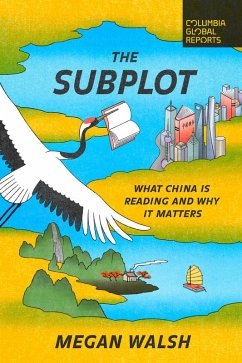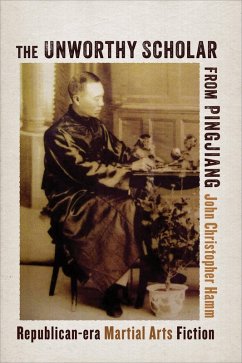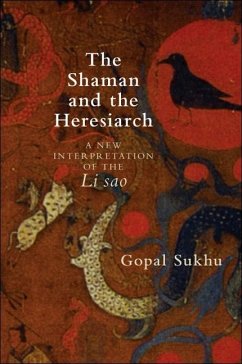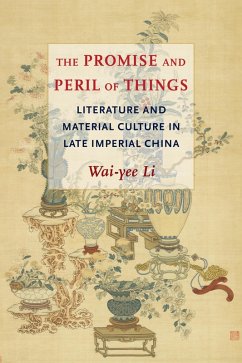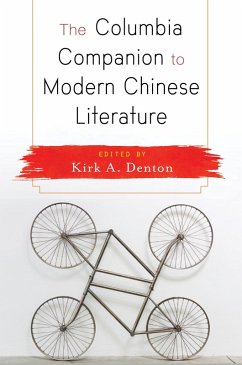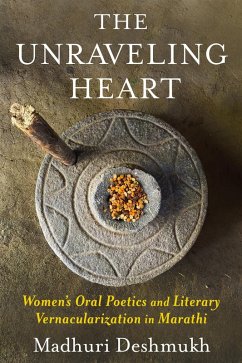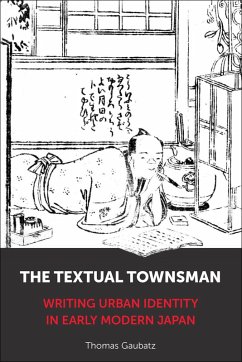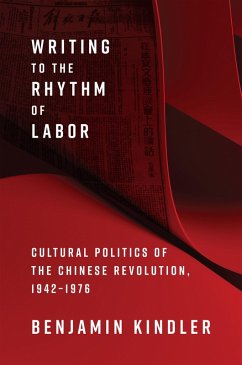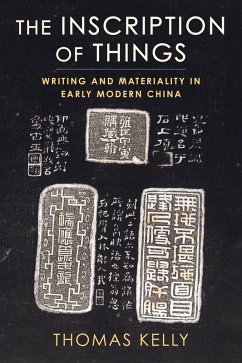
Towers in the Void (eBook, ePUB)
Li Yu and Early Modern Chinese Media

PAYBACK Punkte
13 °P sammeln!
The maverick cultural entrepreneur Li Yu survived the tumultuous Ming-Qing dynastic transition of the mid-seventeenth century through a commercially successful practice founded on intermedial experimentation. He engaged an astonishingly broad variety of cultural forms: from theatrical performance and literary production to fashion and wellness; from garden and interior design to the composition of letters and administrative documents. Drawing on his nonliterary work to reshape his writing, he translated this wide-ranging expertise into easily transmittable woodblock-printed form. Towers in the...
The maverick cultural entrepreneur Li Yu survived the tumultuous Ming-Qing dynastic transition of the mid-seventeenth century through a commercially successful practice founded on intermedial experimentation. He engaged an astonishingly broad variety of cultural forms: from theatrical performance and literary production to fashion and wellness; from garden and interior design to the composition of letters and administrative documents. Drawing on his nonliterary work to reshape his writing, he translated this wide-ranging expertise into easily transmittable woodblock-printed form. Towers in the Void is a groundbreaking analysis of Li Yu's work across these varied fields. It uses the concept of media to traverse them, revealing Li Yu's creative enterprise as a remaking of early modern media forms.
S. E. Kile argues that Li Yu's cultural experimentation exploits the seams between language and the tangible world. He draws attention to the materiality of particular media forms, expanding the scope of early modern media by interweaving books, buildings, and bodies. Within and across these media, Li Yu's cultural entrepreneurship with the technology of the printed book embraced its reproducibility while retaining a personal touch. His literary practice informed his garden design and, conversely, he drew on garden design to transform the vernacular short story. Ideas for extreme body modification in Li Yu's fiction remade the possibilities of real human bodies in his nonfiction writing. Towers in the Void calls for seeing books, bodies, and buildings as interlinked media forms, both in early modern China and in today's media-saturated world, positioning the Ming and Qing as a crucial site of global early modern cultural change.
S. E. Kile argues that Li Yu's cultural experimentation exploits the seams between language and the tangible world. He draws attention to the materiality of particular media forms, expanding the scope of early modern media by interweaving books, buildings, and bodies. Within and across these media, Li Yu's cultural entrepreneurship with the technology of the printed book embraced its reproducibility while retaining a personal touch. His literary practice informed his garden design and, conversely, he drew on garden design to transform the vernacular short story. Ideas for extreme body modification in Li Yu's fiction remade the possibilities of real human bodies in his nonfiction writing. Towers in the Void calls for seeing books, bodies, and buildings as interlinked media forms, both in early modern China and in today's media-saturated world, positioning the Ming and Qing as a crucial site of global early modern cultural change.
Dieser Download kann aus rechtlichen Gründen nur mit Rechnungsadresse in A, D ausgeliefert werden.




